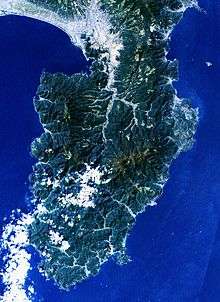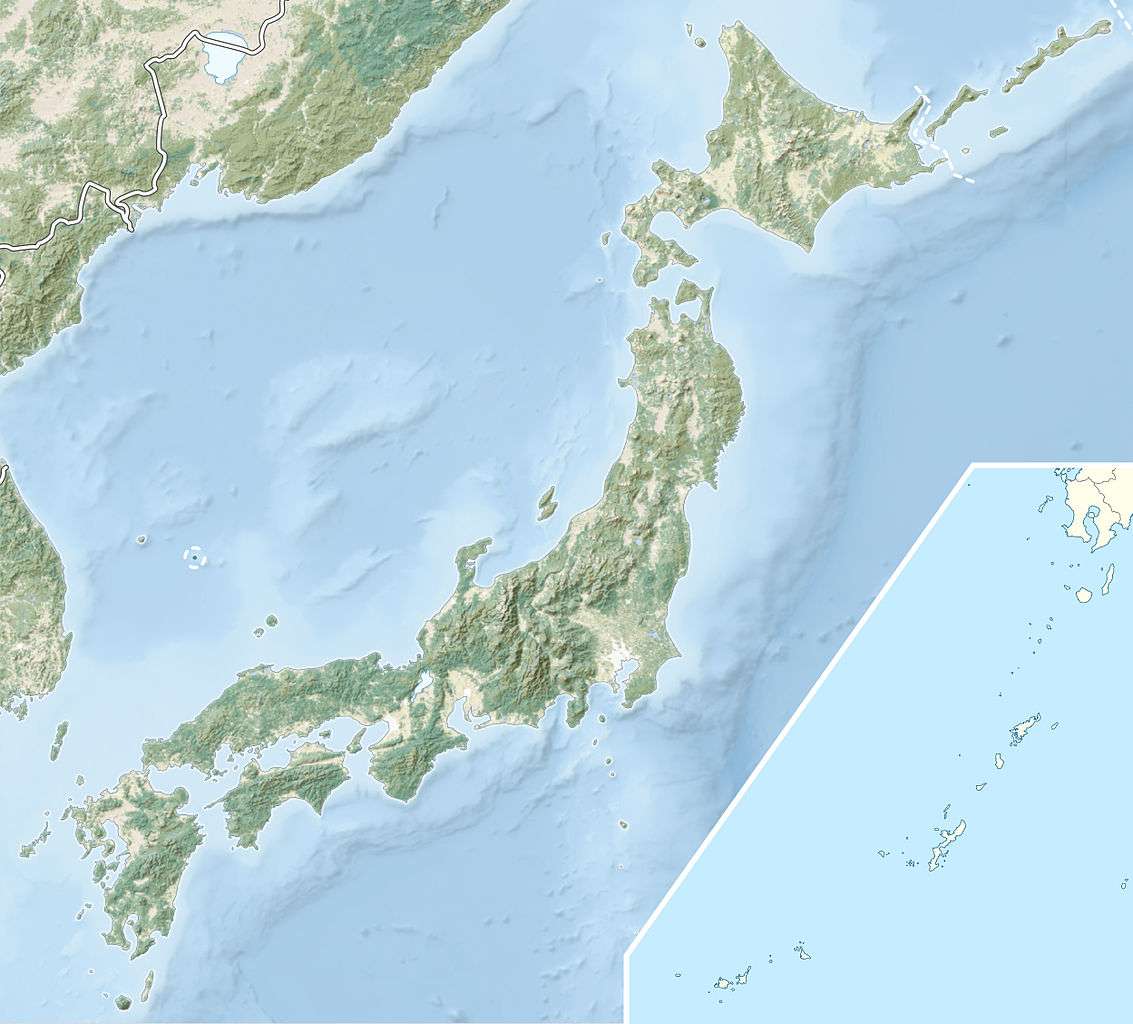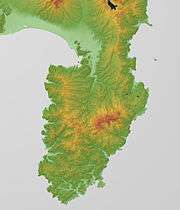Izu Peninsula


The Izu peninsula (伊豆半島 Izu-hantō) is a large mountainous peninsula with deeply indented coasts to the west of Tokyo on the Pacific coast of the island of Honshū, Japan. Formerly the eponymous Izu Province, Izu peninsula is now a part of Shizuoka Prefecture. The peninsula has an area of 1,421.24 km² and its estimated population in 2005 was 473,942 people.
Geology
Tectonically, the Izu peninsula results from the Philippine Sea Plate colliding with the Okhotsk Plate at the Nankai Trough. The Philippine Sea Plate, the Amurian Plate, and the Okhotsk Plate meet at Mount Fuji, a triple junction. The peninsula itself lies on the Philippine Sea Plate.


The southern portion of the peninsula is composed largely of breccia, and the central and northern portions consist of numerous highly eroded volcanos. The Amagi Mountain Range dominates the center of the peninsula with Mount Amagi (1406 m) and Mount Atami (773 m) in the east and Mount Daruma (982 m) in the west, with the eastern and western portions of the range extending underwater into Sagami Bay and Suruga Bay. The peninsula's major river, the Kano River in the north, flows through a graben valley created by plate tectonics.
As a result of its underlying geology, the peninsula is prone to frequent earthquake swarms and tsunamis, and it abounds in hot springs.
Administration
All of Izu Peninsula is within Shizuoka Prefecture. It is divided administratively into several cities and towns:
- Atami
- Itō
- Izu
- Izunokuni
- Mishima
- Shimoda
- Kamo District - Higashiizu
- Kamo District - Kawazu
- Kamo District - Matsuzaki
- Kamo District - Minamiizu
- Kamo District - Nishiizu
Economics
A popular resort region for tourists from the Kantō region, the Izu peninsula is primarily known for onsen hot spring resorts in Atami, Shuzenji, and Itō. The peninsula abuts Mount Fuji and is a part of Fuji-Hakone-Izu National Park. The area is also popular for sea bathing, surfing, golfing and motorcycle touring.
Aside from tourism, agriculture and fishing are the mainstays of the local economy. Izu is one of the biggest producers of wasabi in Japan, and the local cuisine offers dishes flavored with wasabi.
Access
Railway

The Izu peninsula is easily accessible from Tokyo and points west via the Tōkaidō Shinkansen, which has stations in both Atami in the northeast and Mishima in the northwest. JR Itō Line and the Izu Kyūkō Line provides service along the east coast of the peninsula to Shimoda.
Central Izu is served by the Sunzu Line as far as Shuzenji. The west coast of the peninsula is less developed, and has no train service.
Roadway
Izu Peninsula is served by numerous expressways. By car, it is 103.3 km from the Yōga Interchange (用賀インター Yōga Intā) on the Tokyo end of the Tōmei Expressway to Numazu. To get to the eastern side, a branch at Atsugi leads to the Odawara-Atsugi Road, which continues past Odawara to Yugawara, Atami, and Shimoda. Izu Peninsula is also served by Japan National Route 135, Japan National Route 136, and Japan National Route 414. Izu also offers two scenic roads, called "Izu Skyline" (伊豆スカイライン) and "Western Izu Skyline" (西伊豆スカイライン)that offer beautiful views on nature and Mt. Fuji. Both skyline roads are favorite spots of car and motorcycle enthusiasts.
The Odakyu Electric Railway runs local bus services from Odawara and Hakone, and there is an extensive internal bus network.
References
External links
- Izu Peninsula Geopark
- Izu Peninsula - Encyclopædia Britannica Online
- Eastern Area (Izu) - Shizuoka Guide (Shizuoka Prefectural Tourism Association)
- "Izu Peninsula" (PDF). - Japan National Tourist Organization
Coordinates: 34°54′N 138°57′E / 34.900°N 138.950°E

